

History
The 8th Infantry Division was formed in early January 1918 for service during World War I. By the time the 8th Division had trained up and deployed to France in November of the same year, the fighting was over. Subsequently the Golden Arrow Division did not gain any combat experience during WWI. The troopers of the 8th Division returned to the United States and the unit was inactivated in January of 1919

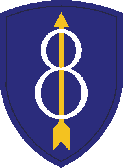
World WarII:
The Pathfinder Division was called to serve again, this time during the buildup for WWII. The Division was activated on July 1, 1940 and deployed overseas on December 5, 1943. The Allies invaded France on D-day, June 6, 1944. After training in Ireland the 8th Infantry Division landed on Utah Beach, Normandy, on July 4, 1944 and entered combat on the 7th. Fighting through the hedgerows, the 8th I.D. crossed the Ay River on July 26th and pushed through Rennes on August 8th, and continued their advance to attack Brest in September. The Crozon Peninsula was cleared by September 19th, and the Division drove across France to Luxembourg. The Pathfinder Division moved to the Hurtgen Forest on November 20th. Troopers of the 8th Infantry Division cleared Hurtgen on the 28th and Brandenburg on December 3rd.
Now the Golden Arrow Division pushed on to the Roer. That river was crossed on February 23, 1945, Duren taken on the 25th and the Erft Canal was crossed on the 28th. The 8th Infantry Division reached the Rhine near Rodenkirchen by March 7, 1945 and maintained positions along the river near Koln. On April 6th the Division attacked northwest to aid in the destruction of enemy forces in the Ruhr Pocket, and by the 17th had completed its mission. The Division, under operational control of the British Second Army, drove across the Elbe on May 1st, and had penetrated to Schwerin when the war in Europe ended.
Wöbbelin
On May 2, 1945, as the Golden Arrow Division advanced into northern Germany, the 8ID encountered the Neuengamme concentration camp Wöbbelin subcamp, near the city of Ludwigslust. The SS had established Wöbbelin in early February 1945 to house concentration camp prisoners who had been evacuated from other Nazi camps in order to prevent their liberation by the Allies. Wöbbelin held some 5,000 inmates, many of whom suffered from starvation and disease. The sanitary conditions at the camp when the 8th ID arrived were deplorable. There was little food or water, and some prisoners had resorted to cannibalism. In the first week after liberation, more than 200 inmates died.
The 8th Infantry Division was recognized as a liberating unit by the U.S. Army's Center of Military History and the United States Holocaust Memorial Museum in 1988.
During their service in WWII, the 8th Infantry Division spent 266 days in combat. Their total combat casualties numbered 13,986. Of that number, 2,852 were killed in action. The Pathfinder Division had fought in four campaigns and earned five unit citations. Troopers of the 8th Infantry Division were awarded 768 Silver Stars, 2 Distinguished Service Medals, 33 Distinguished Service Crosses, and 3 Medals of Honor.

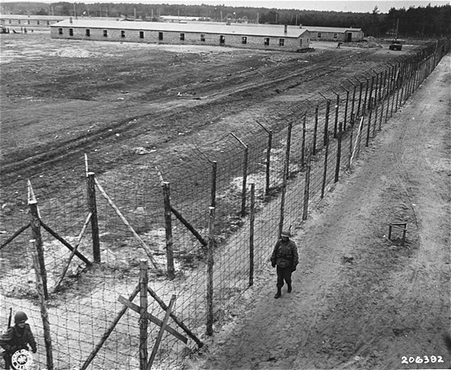
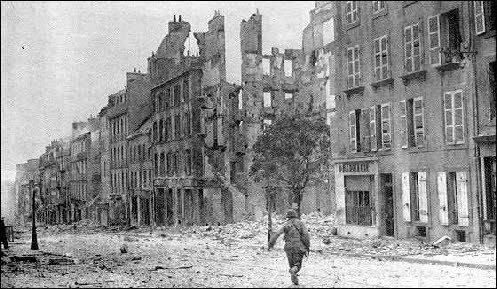
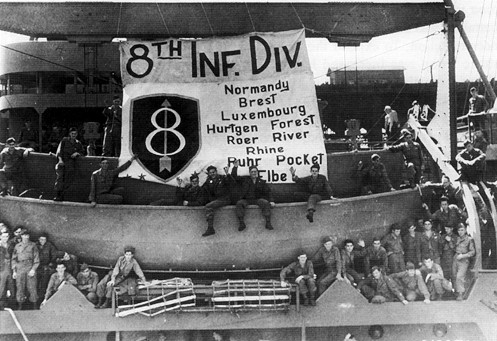
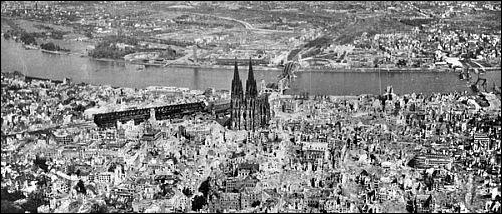
Casualty figures for the 8th Infantry Division, European theater of operations
Total battle casualties: 13,986
Total deaths in battle: 2,852
Division nickname
The 8th Infantry Division was known as both the "Golden Arrow" and "Pathfinder" division
during World War II. Both nicknames originated from the division's insignia, which
includes a gold arrow to represent the nineteenth-century explorer of California,
John Fremont. The division was formed in California in 1918.







